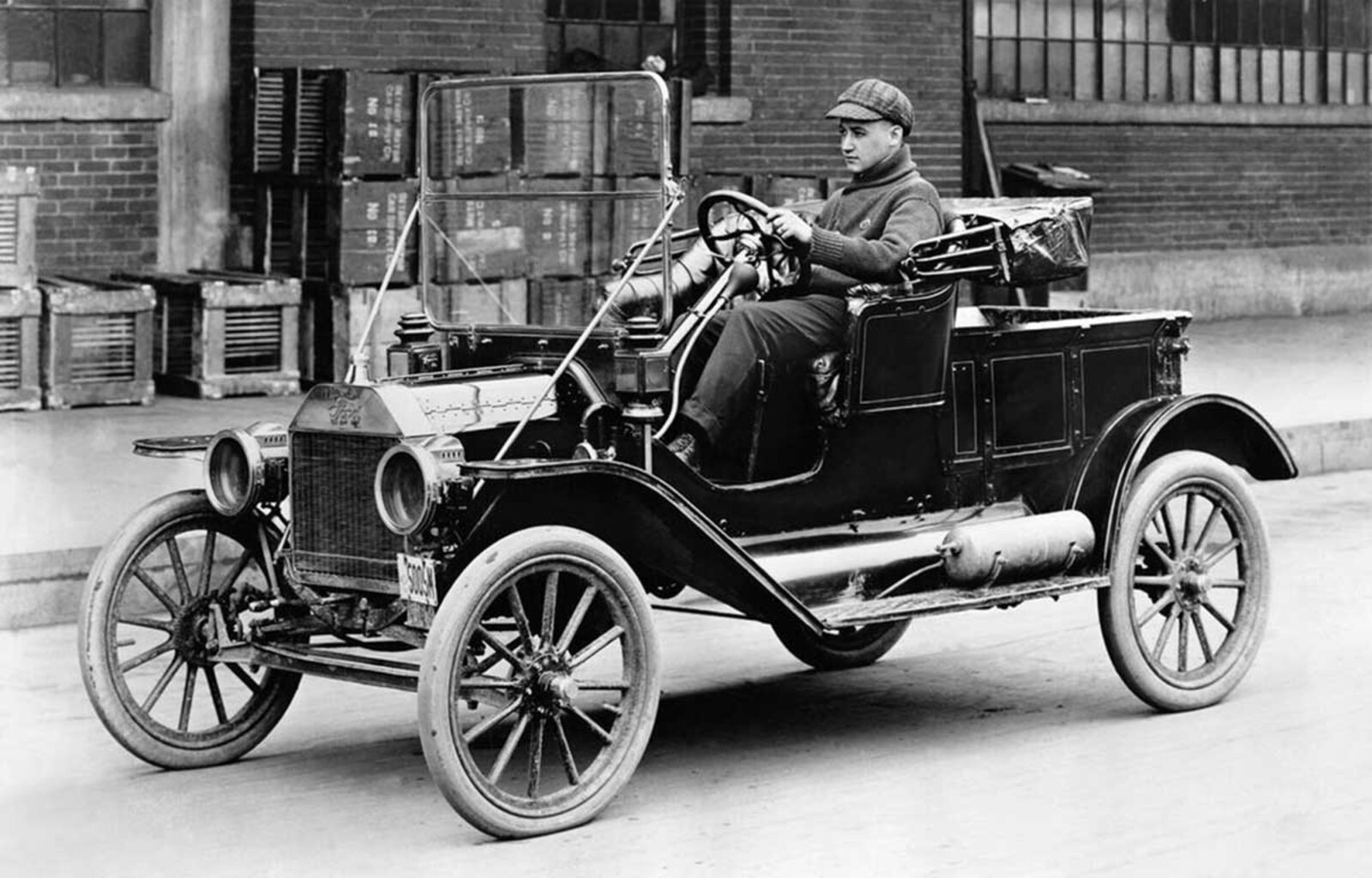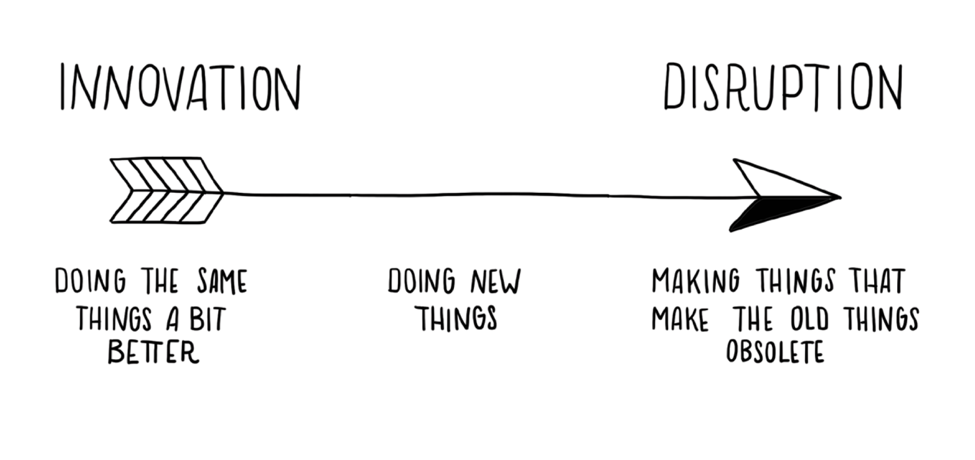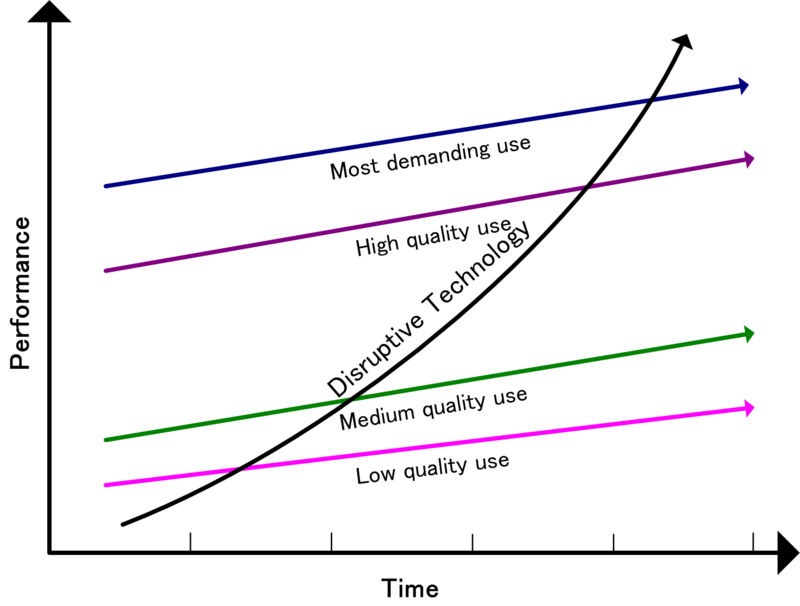How Traditional Companies Can Disrupt with Innovation
“If I had asked people what they wanted, they would have said faster horses.” — Henry Ford

When existing businesses were busy looking for faster horses to fulfill the people’s increasing transportation demand, Henry Ford tried a different approach. And when he finally succeeded with his automobile design, Ford T-Series completely disrupted horse dominated travel industry. This is called the disruptive innovation.
Disruptive innovation is not a new concept, and it has been in our economy for a very long time. A few of the common examples of disruptive innovations are when democracy replaced monarchy, Internet replaced the traditional money-making model to make money online alternatives or when Emails replaced posts & telegrams.
Two Kinds of Innovation:
There are two kinds of innovation in the business world- Sustaining Innovation and Disruptive innovation. To disrupt and impact an industry one must think about innovation and technology and understand why big firms fail under conditions of the technological change. However, in order to understand that let’s first discuss what is sustaining and disruptive innovation.
1. Sustaining Innovation
Sustaining innovation is an incremental innovation process to improve the operations on a predictable time frame. This kind of innovation typically follows the ways the company was incorporated into the business.
Sustaining innovators only focus on the demands of the mainstream customers. If the customers want better products, they’ll keep evolving the products.
2. Disruptive Innovation
Disruptive innovations are the new innovations whose applications can significantly affect a market or industry functions. They create a new market and value systems which eventually disrupts the existing market, displacing market-leading firms, products etc.

Nevertheless, a disruption is never welcomed initially. Here are the few traits of the disruptive innovations:
- These kinds of innovation have a high risk of failure compared to the incremental sustaining innovations.
- They initially offer a lower performance compared to what the mainstream market has historically demanded.
- However, once developed, these innovations achieve faster penetration and builds a higher degree of impact on the established markets.
- Other performance attributes (smaller, faster, simpler, portable etc) — that is not valued by the current customers — make it prosper in a new value network.
- As the innovations improve along the traditional performance parameters, they eventually displace the former technology.

Why do large corporations fail?
“Companies are misguided when they continuously listen to their current customers.”
The problem with larger corporations is that their business environment does not allow them to pursue disruptive innovation when they first arise because they are not-profitable initially.
Most big firms are not comfortable with disruptive innovations as these innovations do not satisfy their current customers. They only focus on the demands of the mainstream customers. If the customer wants better products, they’ll keep evolving the products.
Moreover, these kinds of in-house disruptive innovation can burn huge resources away from the sustaining innovation — which is required to compete against the current competitions. Therefore, these companies are ‘held captive’ by their most profitable customers, restricting them from pursuing disruptions.
Let’s understand this with the help of an example.
There was a time when disk drives were a multi-million-dollar industry.

The disks were continuously evolving its storage and performance as per the demand of the people. They managed a sustaining transition from one generation of the disk drive to another (14-inch hard disk drive → 8-inch floppy disk drive → 5.25-inch floppy disk drive → 3.5-inch floppy disk drive) so that people can get better disk drives.
However, these disk drives were never able to completely satisfy the demands at any particular time as the customers always demanded better storage capacity.
Now, when the new generation of drives (CDs and USB flash drives) first arrived, they offered the worst performance in terms of what the customers demanded. However, with time, they improved their performance and offered a huge storage capacity to the people which the traditional disk drives (floppy disks) were never able to fulfill.
What went wrong here?
Although the companies were continuously innovating to improve their product. But most of them went bankrupt continuously listening to their customers and giving them what they demanded.
The new generation of drive emerged in a new value of the network. Eventually, their products became ‘good enough’ in terms of performance and storage capacity and later displaced the former generation.
A Few best examples of the Disruptive innovations:
Most of the disruptive innovations are not gladly welcomed by the market when they first present themselves. Here are the few examples of some recent industry disruptors:
(Disruptive Innovation → Market disrupted by innovation)
- Uber/Lyft → Taxis, Ridesharing
- Wikipedia → Traditional Encyclopedias
- iPad → Portable computers
- Google Maps → Navigation system & paper maps
- Skype → Telecommunication system
- Netflix → CD/DVD rentals
- Amazon → Book selling shops/chains.
Potential disruptive innovations that may transform the world:
There’s always someone somewhere working to disrupt the current market system.
A few of the ongoing potential disruptive innovations that may transform the world tomorrow are Robotics, Autonomous vehicles, Internet of things, Artificial intelligence, Space Colonization, 3D Printing, High-speed travel, Blockchain technology, Advanced virtual reality, Cryptocurrency etc.
Bottom line
Disruptive innovation is a process where a smaller company with fewer resources are able to successfully challenge the big businesses. Established companies often struggle to develop and launch break-out ideas. Here are the essential capabilities for participating in the next billion-dollar growth market, including the potential of establishing a separate innovation track.
To avoid being displaced by startups, established companies need to get out of their own way. This means not allowing a cautious culture or rigid organizational structure to stifle innovation. For many companies, the practical approach to innovation is to engage an experienced partner like Covenant Technology Partners, who can help with the ability to quickly ramp up an agile, seasoned team that can combine data science, human science and business acumen to conceive, build and bring new digital products to market at scale.
Learn more with our paper “How Traditional Companies Can Disrupt with Innovation” or contact us at Covenant Technology Partners to start your own industry disruption.

